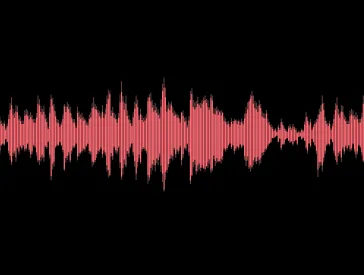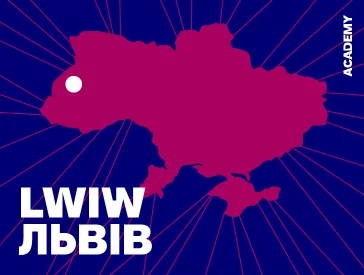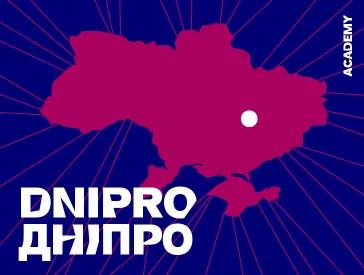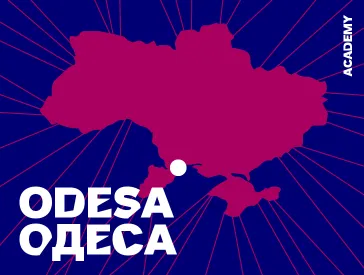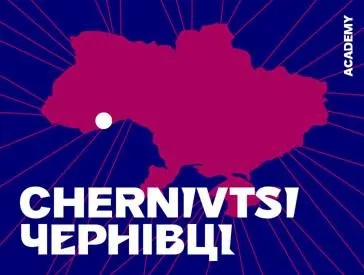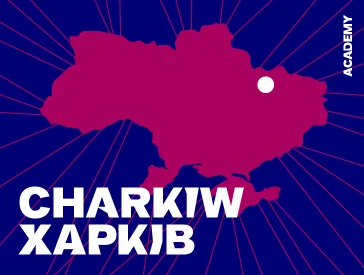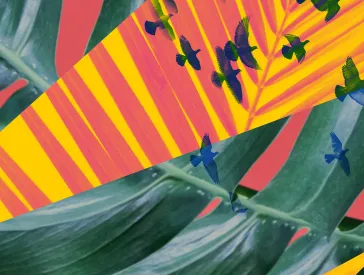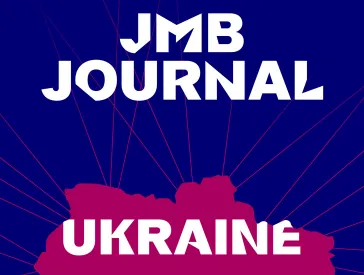Why was Kyiv one of the most important centers of Yiddish literature?
Interview with Gennady Estraikh, Professor of Soviet Yiddish Culture and History at New York University
What were the centers of Yiddish literature in the Russian Empire and the Soviet Union?
In the Russian Empire, the main center for Yiddish culture was of course Warsaw. Warsaw was the center of predominantly commercial Yiddish culture, publishing newspapers with a high circulation, and publishing books: the main publishers were in Warsaw. And there was a parallel development in Vilna [Vilnius] and in Kyiv. They opposed this commercial lowbrow culture and wanted to develop highbrow Yiddish literature. Vilna was good at producing some theoreticians, and Kyiv was good at producing, as it happened, Yiddish writers. So, this was a cooperation between two things. When the revolution took place, followed by the civil war, and the Russian Empire had disintegrated, Warsaw was outside Soviet territory, Vilna was outside Soviet territory, so Kyiv remained the main center. As simple as that. And actually, the Kyiv group – it was even later called the Kyiv group of Yiddish writers – dominated the Yiddish literary scene in the Soviet Union throughout the entire period.
Why Kyiv?
Kyiv was a rich city. It was outside the Pale of Jewish Settlement. And it happened that Kyiv’s Jewish population had a very peculiar structure because it was difficult for a regular Jewish family or individual to settle in Kyiv. Kyiv was a place where a very significant number of wealthy Jews lived – some of them fabulously wealthy. At the same time, there was also a segment of not wealthy Jews, who got such permission because they qualified in various fields, and as a result they were allowed to settle. As you know, Sholem Aleichem used to live in Kyiv for a long period of time apparently. This was important. Also, in many cases we see the following story: a rich family was allowed to invite teachers for their children. And of course, a rich family would find the best and some remarkable – whatever remarkable meant at that time – person would become a teacher. And at the same time, such a person would write in Hebrew, and then Sholem Aleichem encouraged this person to write in Yiddish. So, there was some basis. And Kyiv in general was one of the places where many Jews were highly educated or interested in education and some of them became interested in Yiddish.
How did the Night of the Murdered Poets affect the use of Yiddish language and culture in Ukraine?
First of all, I am not a great fan of the term “the night of the murdered poets.” Because on 12 August 1952, thirteen people were executed, and only four of them were poets. To give that name to this tragic event, “murdered poets,” somehow makes the other people irrelevant. I don’t believe it’s fair, to be honest. But in any case, what is really significant is that this was the night when the four poets and one prose writer, Dovid Bergelson, were executed, and they were the best writers. They were really the best writers, Yiddish writers, the most influential, some trend-setting writers, effectively literary celebrities. That left a void that was impossible to fill afterwards. As did the [surrounding] events, not only of 12 August 1952 but in general of the persecution of Yiddish writers, because many of them, many more Yiddish writers ended up in the Gulag, in the labor camps. The bulk of them survived, but still many of them came out really physically broken, psychologically broken. And this whole tragic development brought, I would say, poison into this literature milieu in general, in Ukraine or in general in the Soviet Union. Because people somehow divided into two groups: those who had been in the camps and those who hadn’t been arrested. So as a result, somehow it was divided: were those who survived in the camps more important than those somehow ignored by the secret police? In addition, during the interrogations many Yiddish writers – or some of them, I don’t know the exact number – were forced to support some accusations against their colleagues under pressure. And as a result, Yiddish writers and this whole circle came out of this experience: “He denounced me,” “No, he denounced me.” In addition, it also of course made them, or at least the bulk of them careful, or maybe too careful. It was fear of course. They came with this experience of being in danger.
Are the events of 12 August 1952 commonly commemorated?
During almost the entire Soviet period, the event of a trial and execution of a group of these figures from the Jewish Antifascist Committee officially didn’t exist. The authorities didn’t recognize it. The day of 12 August 1952 couldn’t be mentioned. Sometimes people would find a way to mention it. For example, in 1984 a dictionary came out, a Russian-Yiddish dictionary. The editor introduced an example in the entry for the number “twelve.” There were no examples under the entries for “eleven” or “thirteen,” but for the entry on “twelve,” he introduced an example: 12 August. And you know it is somehow a hidden memorial. Officially it became possible to mention the events around 12 August 1952 and to write about them as late as December 1989. [At that point] some of the surviving writers started writing their memoirs. And once again, it was even a competition, a bitter competition between the memoirs. So, during the remaining part of the Soviet period, there was a trace of what had happened in and around 1952.
What role does Yiddish play for Jews from Ukraine today?
I don’t know exactly because I left. I left Ukraine almost fifty years ago and the Soviet Union more than thirty years ago. But from what I know, unfortunately it’s minimal. There is some interest. Some people learn Yiddish, and there are people who translate from Yiddish. Something maybe came with the revival of religious life, because quite often it’s Hasidic, and some elements of Yiddish, but… You know, in America there is this intensively criticized culture of blackface. And one of the American cultural historians introduced the term “Jewface.” I believe it’s an interesting term. You know, it is all dancing, cozy, Jewish. If it’s a Jewish dance, then it’s with sidelocks and doing this body language or whatever. So, this kind of performances, Yiddish songs. Sometimes I find it difficult to listen to because it’s not Yiddish, but it’s a kind of Yiddish. In any case, it is quite sad and the influences…Maybe we can compare it with Poland. Whereas in Poland they managed somehow (it is known how, but we don’t have time to explain here) to educate quite a significant group of scholars who produce very interesting stuff around Yiddish, history of Yiddish and so on –people seriously dealing with Yiddish. Unfortunately, not only in Ukraine but more or less in the entire Soviet Union, this didn’t happen. There are no schools, academic schools dealing with Yiddish. There are individuals, but it is minimal, marginal.
Is there a Jewish culture of resistance to Russia’s war of aggression against Ukraine?
I don’t know. Let’s leave it to scholars to [answer] in a few years’ time, when the dust has more or less settled. The problem is, and I had a chance to see it and to listen to it, that in quite a significant number of cases, Jews react – or at least initially; maybe afterwards it changed, but I know of such a reaction – by applying history. History is dangerous, dangerous stuff in general. History is important for historians of course, and historians are always thrilled when something related to history is being read and discussed on so on. But if you take something from history and apply it to a contemporary situation, it can be tricky. Some people recall Bohdan Khmelnytsky 1648–49. And to take this 1648–49 as an argument in a discussion about the Ukrainians in 2022 is a bit ridiculous. Or maybe even to use the events of the civil war and even the Holocaust. Still, how many years we are from the end of the Second World War? People forget about the fact that the bulk of the Ukrainian population voted for a Jewish president. Somehow, they find it less important than Bohdan Khmelnytsky. So, the reaction is mixed. In addition, in the introduction to one of his novels, From the Fair, Sholem Aleichem writes that a Jew is like a carpenter. A carpenter lives and dies and a Jew also lives and dies. In this sense a Soviet Jew, a former Soviet Jew, is first of all, or quite often first of all, a product of the Soviet education, of the Soviet experience, of Soviet social engineering. We don’t know which of the factors played a more important role, the fact that this person is Jewish or the fact that this person is Soviet, or post-Soviet. Quite often the Soviet identity and Soviet background is stronger than the Jewishness. So what share of Ukrainian or Soviet Jews are on the Ukrainian side and what share on the side of Russia, I don’t know. First of all, how to count. I hope that the bulk is on the Ukrainian side, but I also know that there are people who are really quite pro-Putin, and then they have their argument and quite often once again Bohdan Khmelnytsky, [Symon] Petliura and all this can play a role. Especially, as Ukrainian Jews in Ukraine, the majority of them, were culturally more Russified. They would send their children to Russian schools. Russian was predominantly the language of their families, of their education, and many of them looked down at Ukrainian. So it was a kind of a high-language/low-language [situation]. But in any case, let’s leave it to people who research it separately.
The interview was conducted by Immanuel Ayx; Jewish Museum Berlin, Aug 2022
You can find a recording of Gennady Estraikh’s speech about history and legacies of 12 August 1952 on the webpage for the Symposium on the 70th anniversary.

